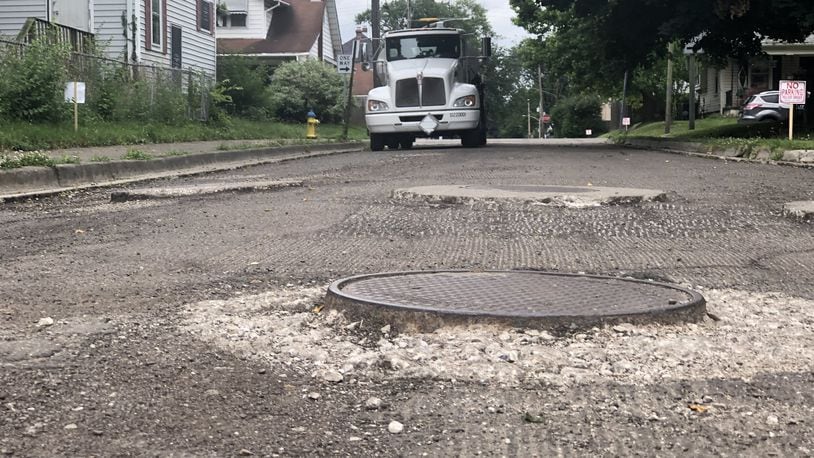“This winter did beat up on the roads,” said Fred Stovall, Dayton’s director of public works.
MORE: Dayton made a levy promise to improve every street in the city, and officials say they’re on track
The city filled 16,958 potholes in the 2018-19 winter, which was up 34% from 12,611 in the previous winter and 576 the winter before that, according to a Dayton Daily News analysis of recently released public works data.
Citizens submitted 1,074 requests to the city to fill potholes between Dec. 21 and March 20, which was an increase of 31 percent from the 2017-18 winter and up 267 percent from the 2016-17 winter season.
This past winter was a roller coaster.
There were many temperature swings, which typically result in weak spots in the pavement, Stovall said.
Potholes occur when water gets under the pavement and expands and contracts because of temperature changes during the freeze-thaw cycle.
December had mild temperatures and very little snow, but there were wet roadways from rain and melted snow.
January was very cold and had several snow storms that dumped more than 14 inches on Dayton.
February had warmer temperatures than normal, but it was a wet month because of significant amounts of precipitation, leading to flash flooding and flood warnings across the region.
During the winter when the asphalt plants close, the city usually fills potholes with a cold patch, which tends to be a temporary repair. When temperatures warm up, potholes are filled permanently with hot asphalt.
Stovall said some public works staff who fill potholes were temporarily diverted after the Memorial Day tornadoes to help with storm cleanup. But they have returned to normal duty, and about two to three crews are out every day searching for and filling potholes, he said.
MORE: Dayton's 41 snow trucks to hit city streets 'around the clock'
Some bumpy roadways have been or will be smoothed out this summer. Dayton selects which streets to be repaved based on their condition, and potholes play a role in determining condition scores, officials said.
The city expects to spend nearly $6.3 million on road repaving this year and plans to repave 64 lane miles of residential roads and thoroughfares, which should wrap up in late summer or early fall.
Dayton’s contractors started resurfacing the city’s roads on May 2 and so far have paved 73 of 140 streets that will be improved, Stovall said.
The city repaved 73 lane miles in 2018, 62 in 2017 and 31 in 2016.
In late May, the Dayton City Commission approved two contracts worth nearly $4.5 million with John R. Jurgensen Co. for residential asphalt resurfacing.
Nearly 80 percent of the funding for the contracts comes from Issue 9, which was the income-tax hike approved by Dayton voters in November 2016. Here's a list of the streets that will be repaved in Dayton this year.
John R. Jurgensen Co. also was awarded a nearly $1.2 million city contract in April for residential asphalt resurfacing.
Under Issue 9, revenue from the eight-year tax hike will help fund improving the average residential pavement condition in the city from poor to satisfactory, the city said. City officials have said that about 60 percent of the city's residential streets would be resurfaced during the levy period, meaning all residential roads would be in good shape by the time the levy expires.
About the Author
